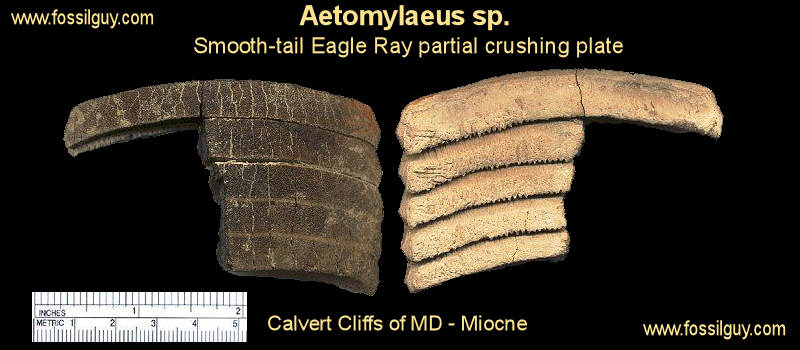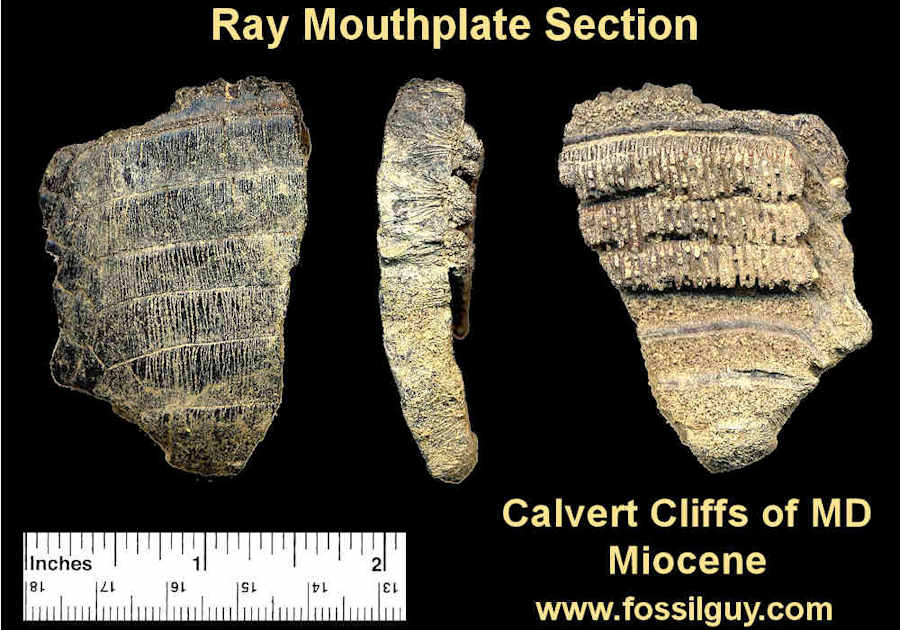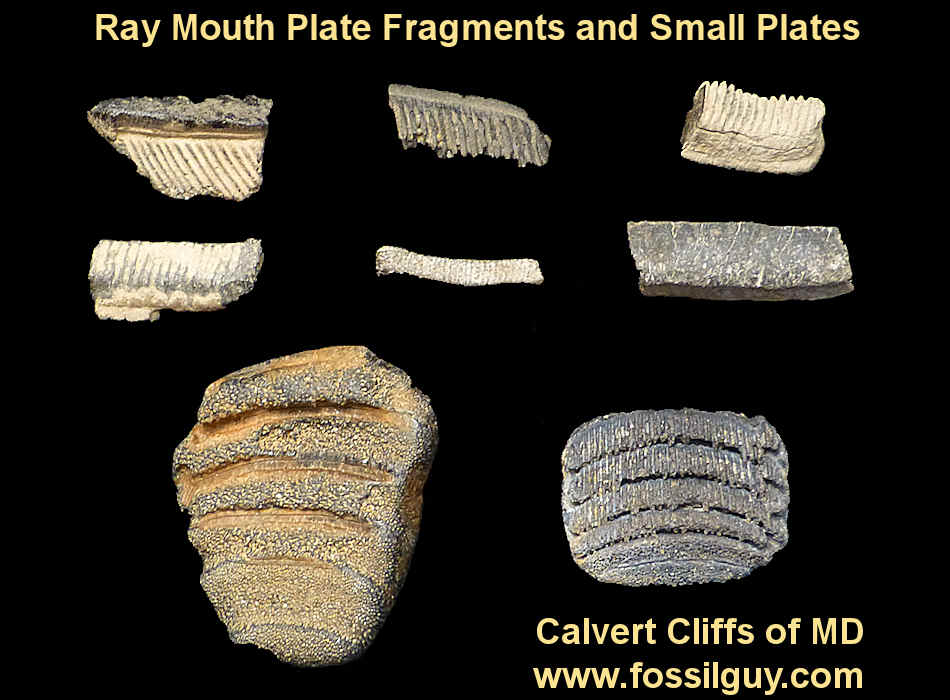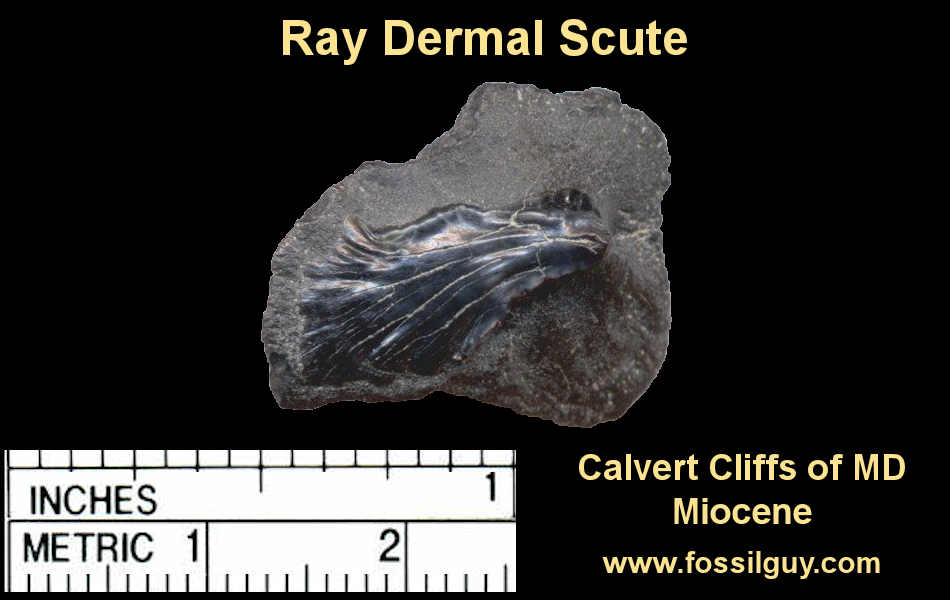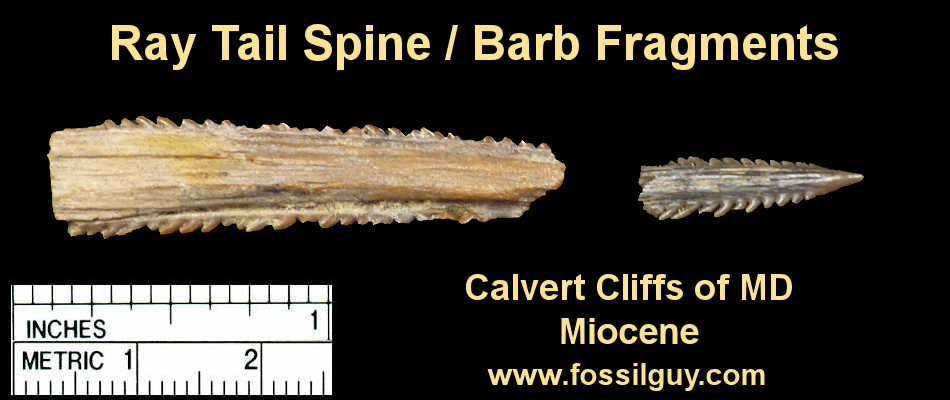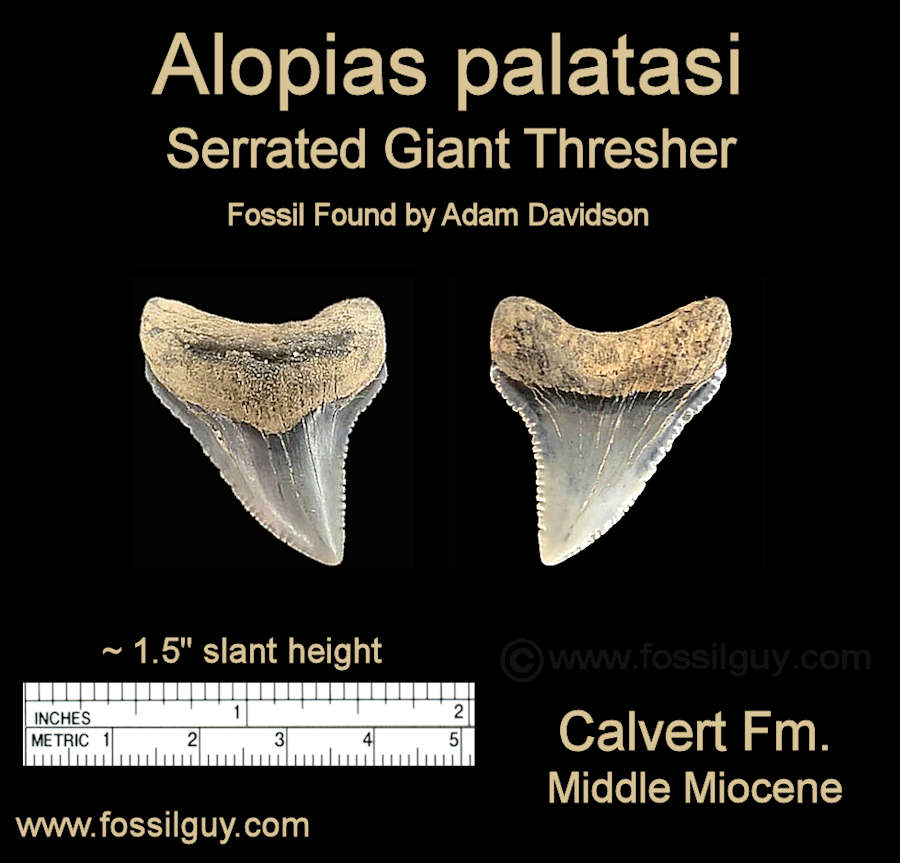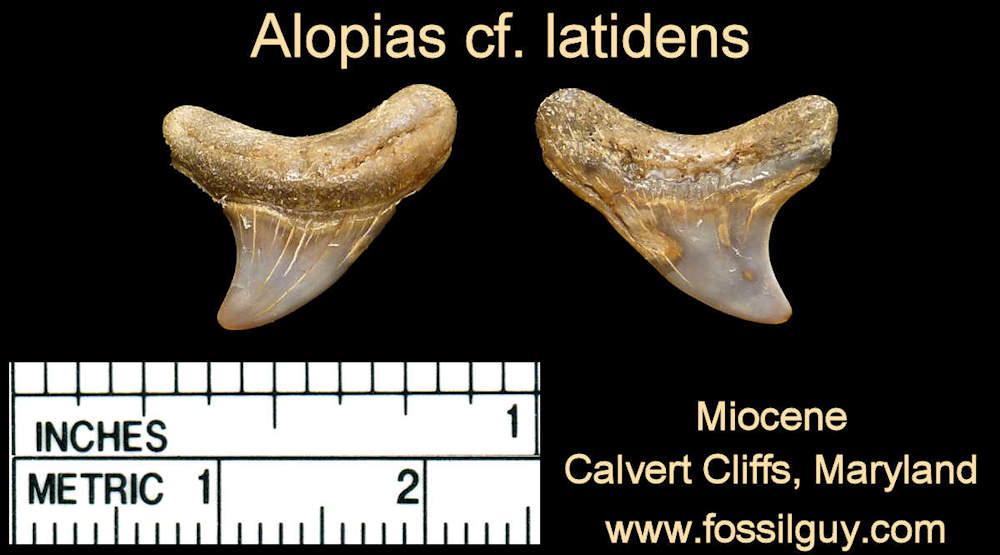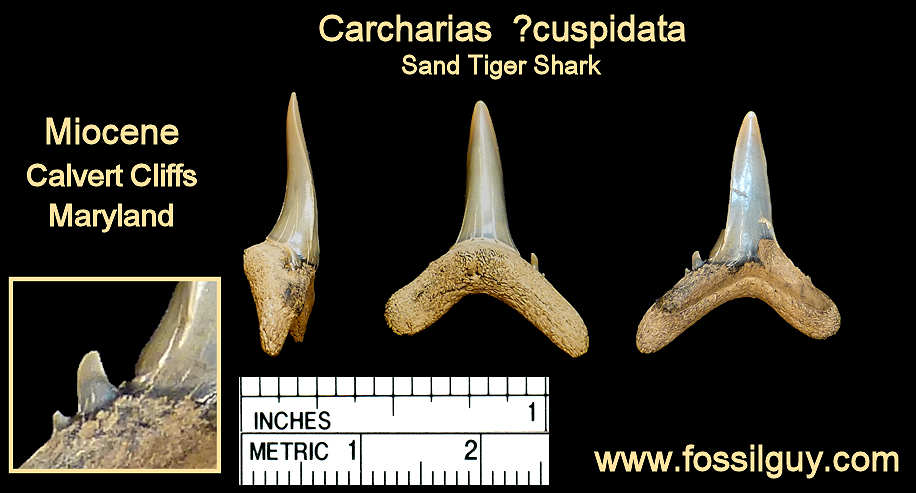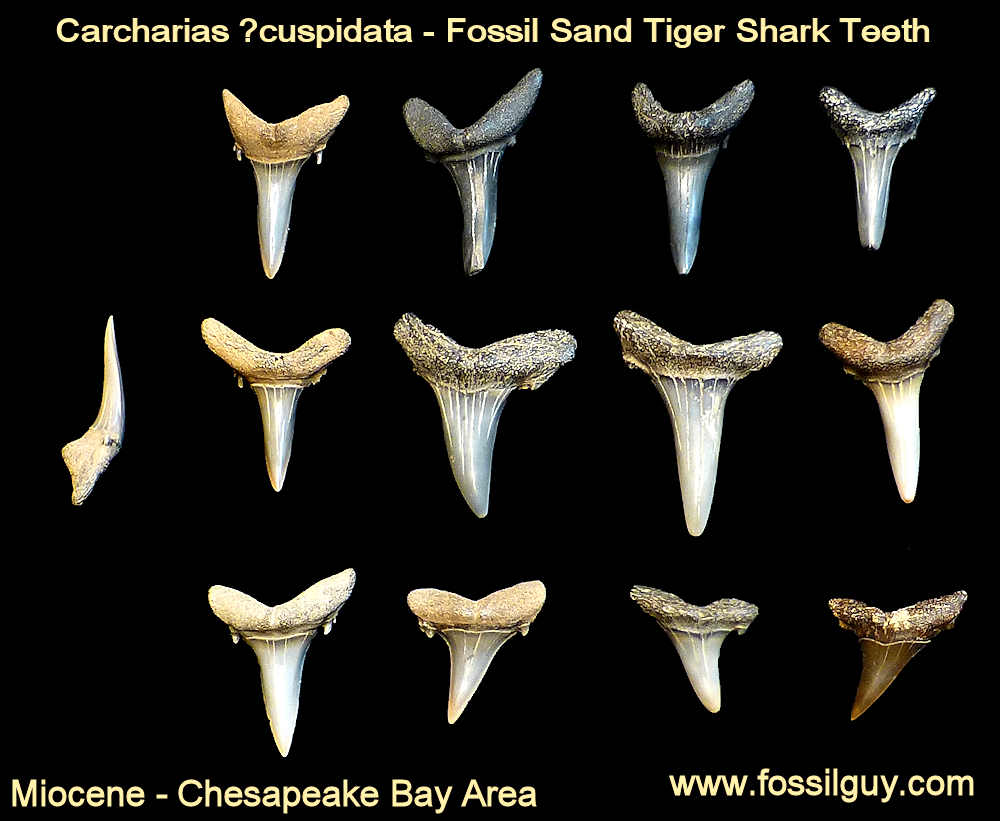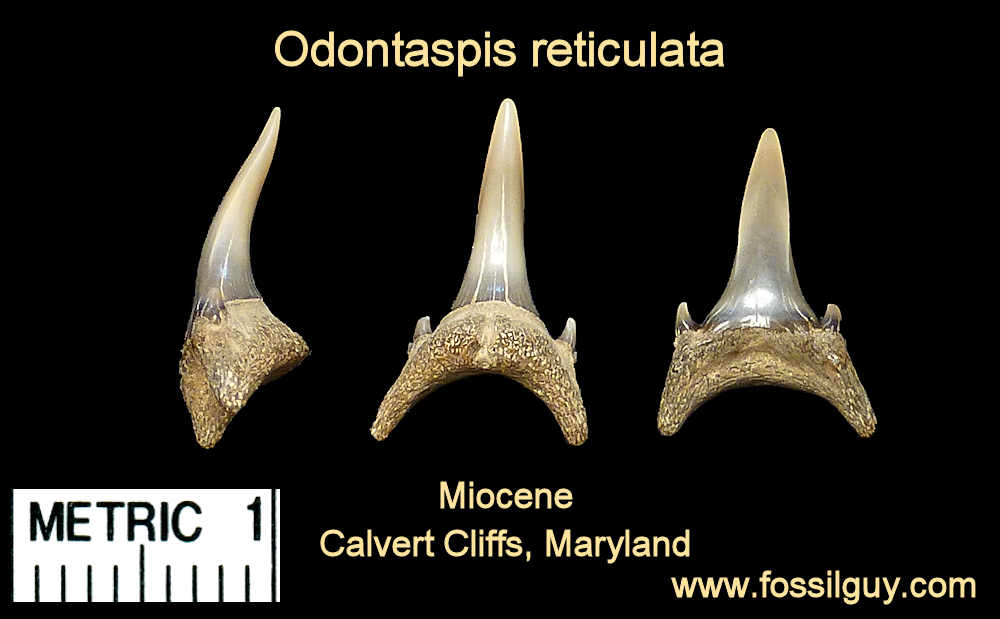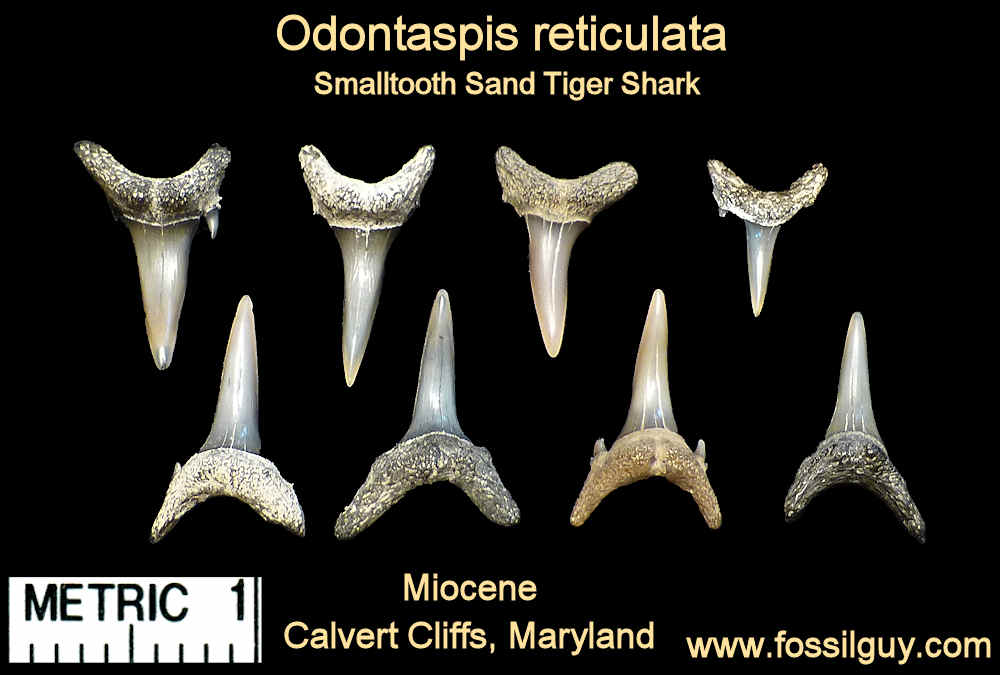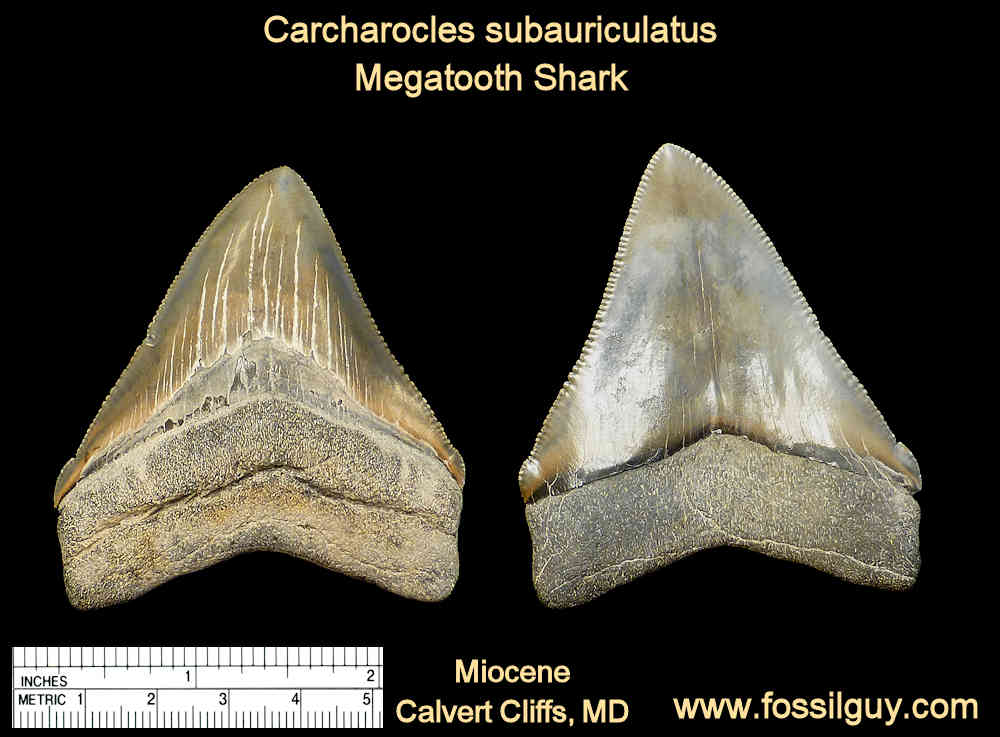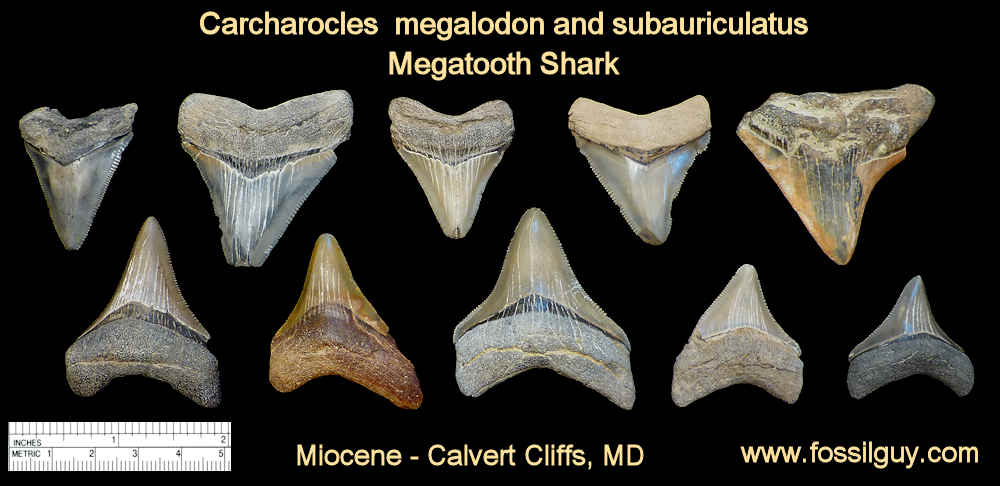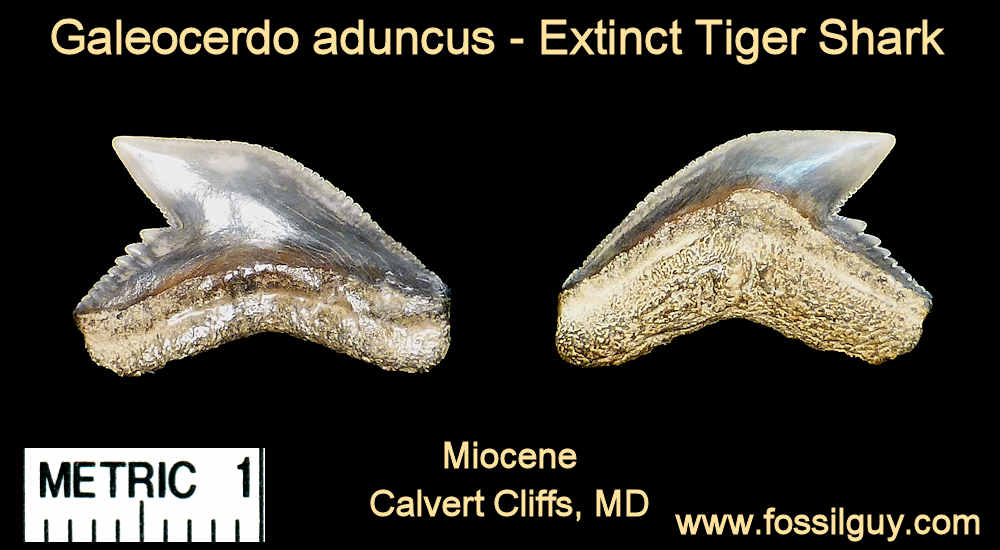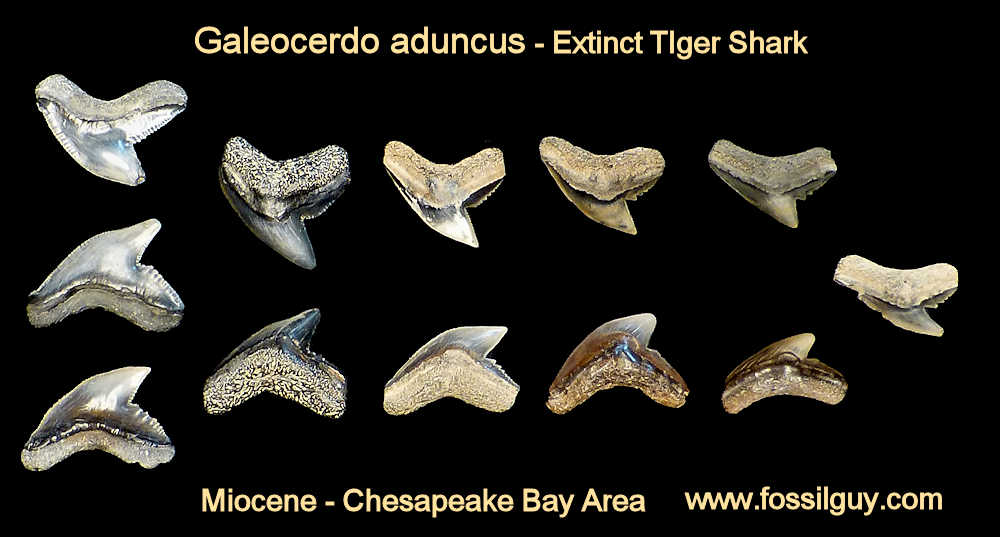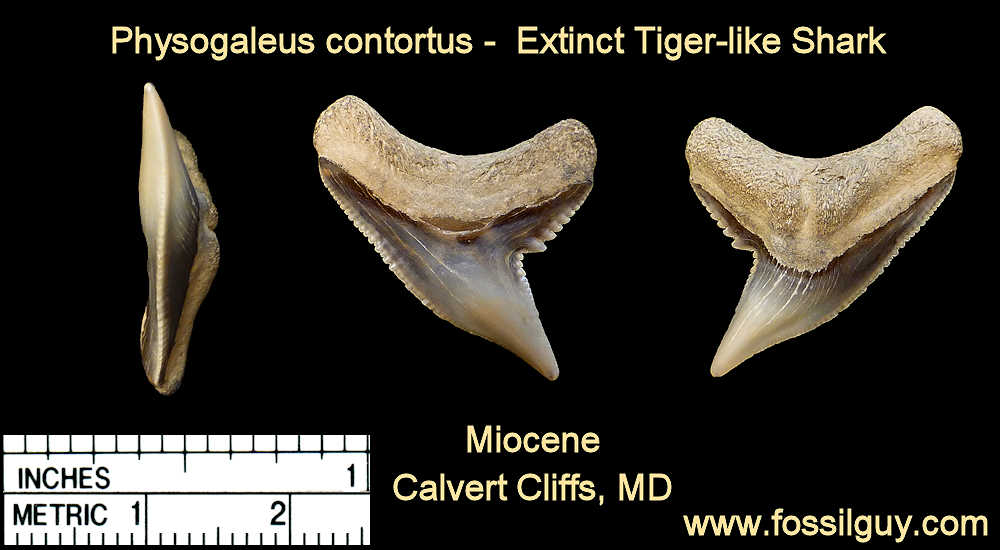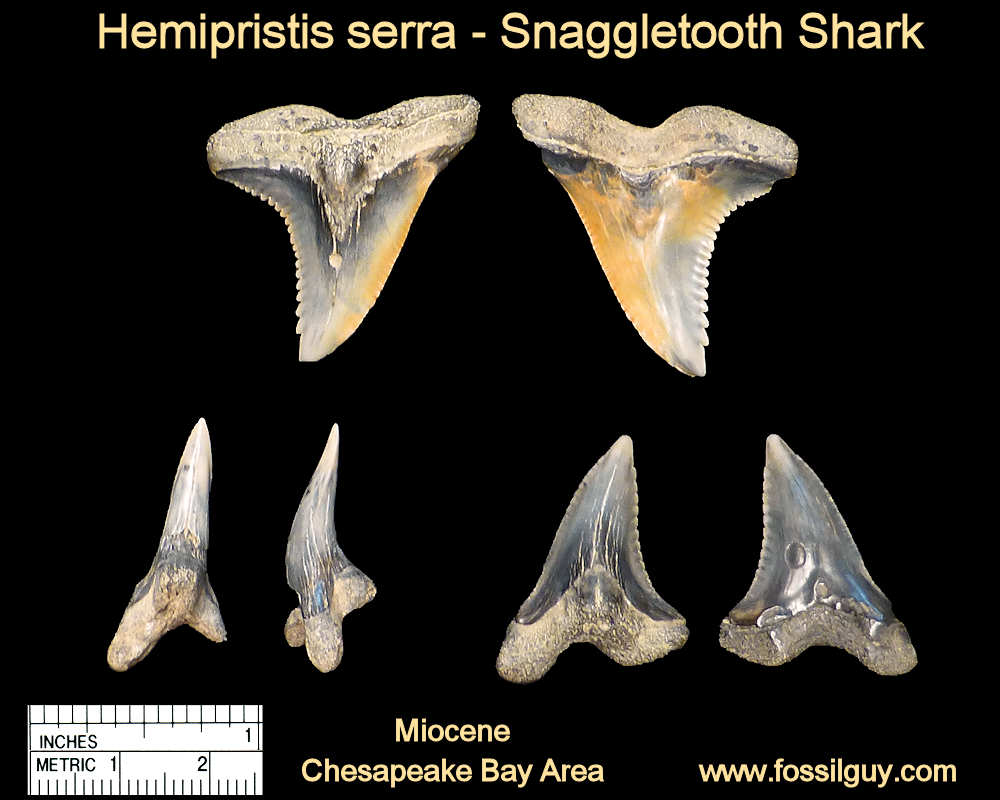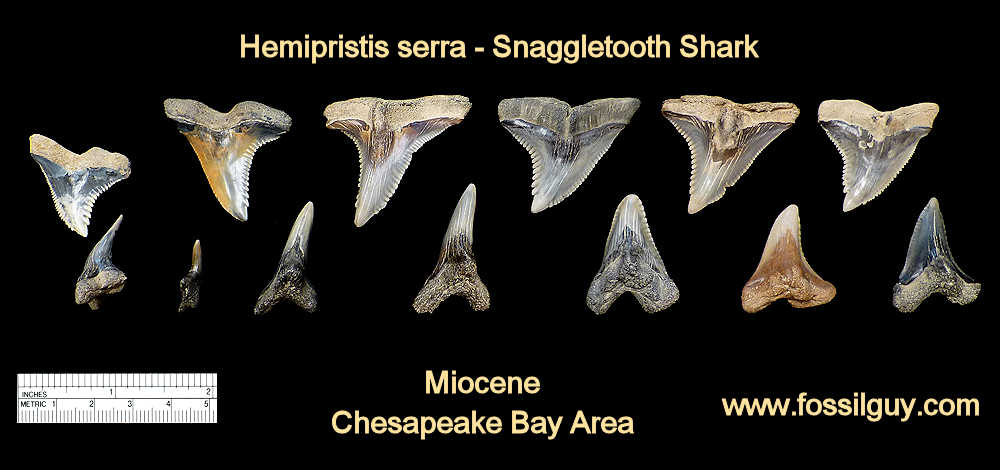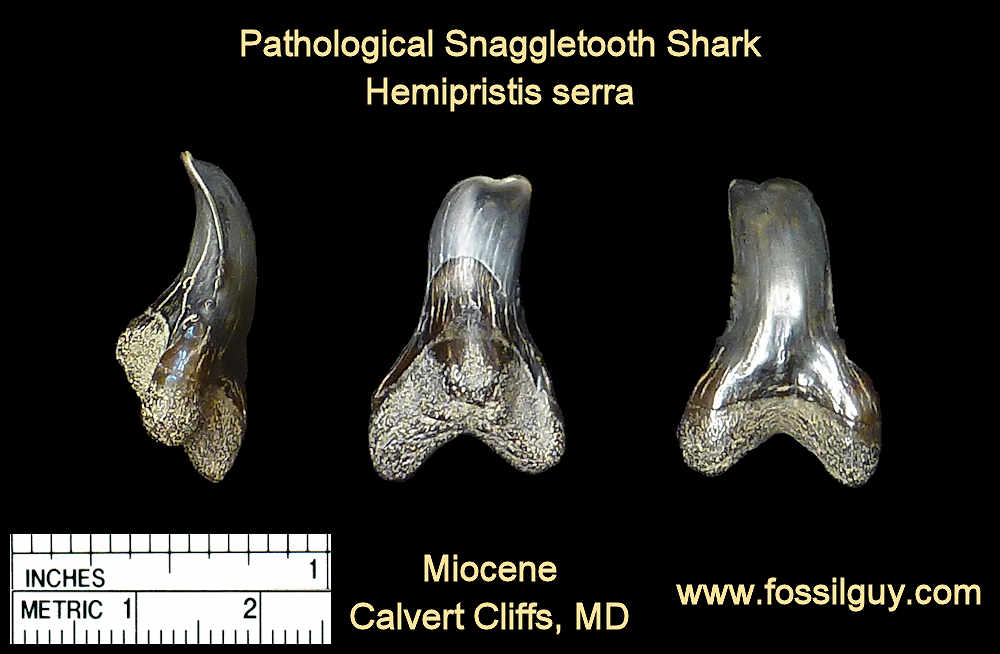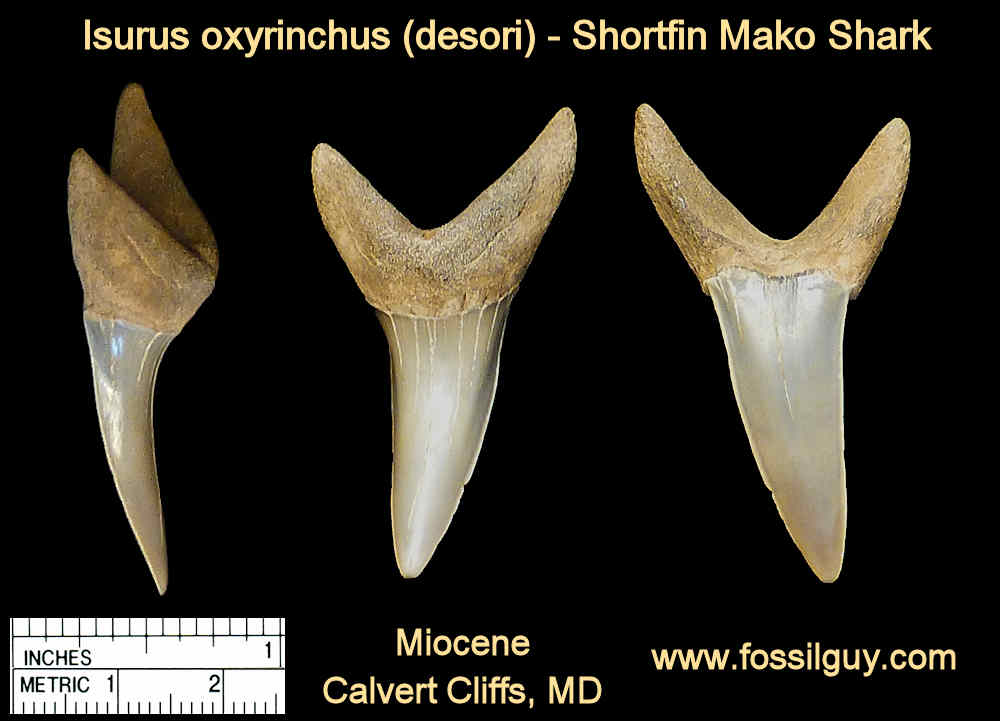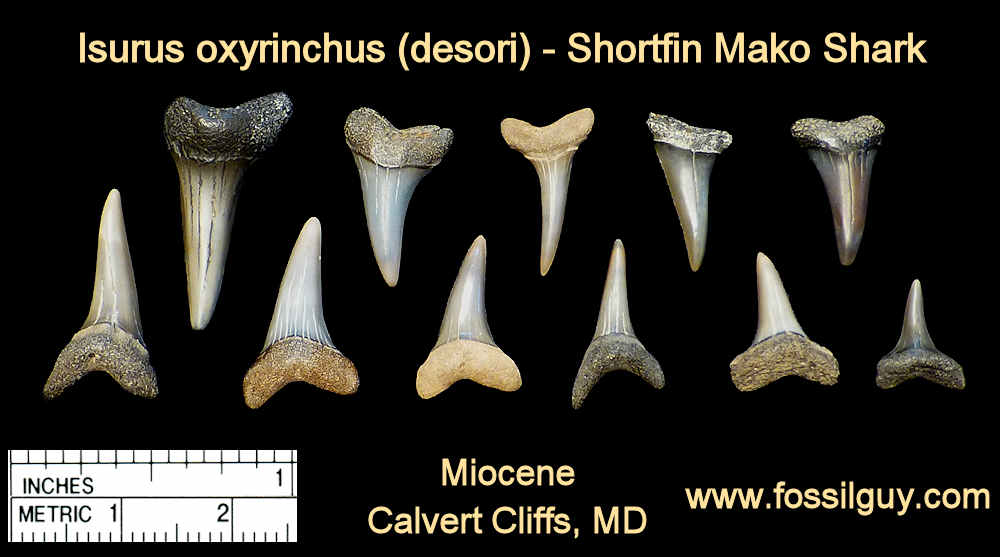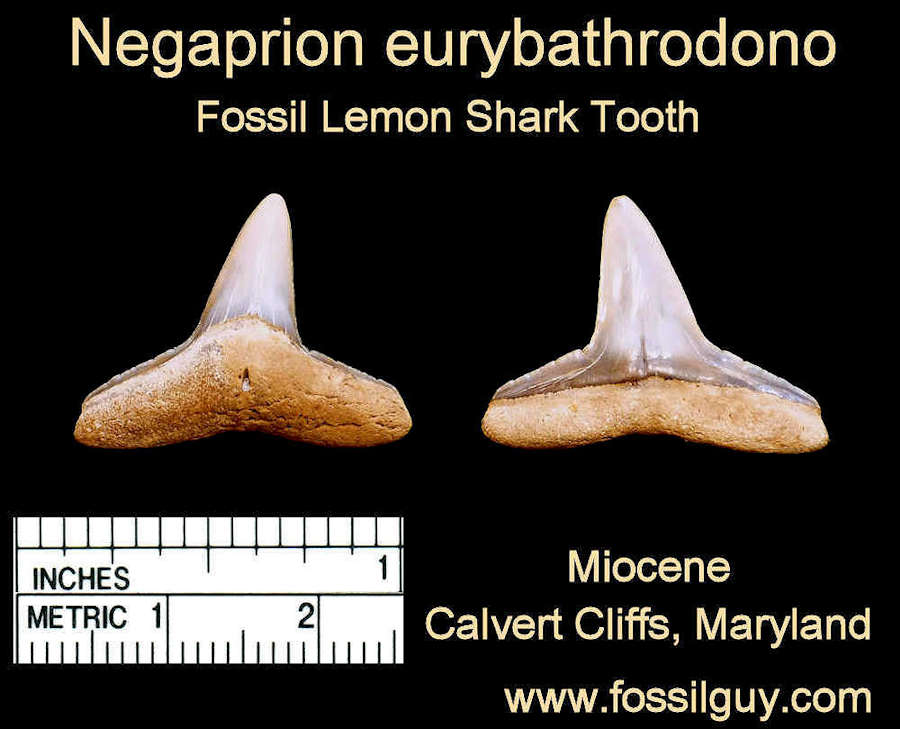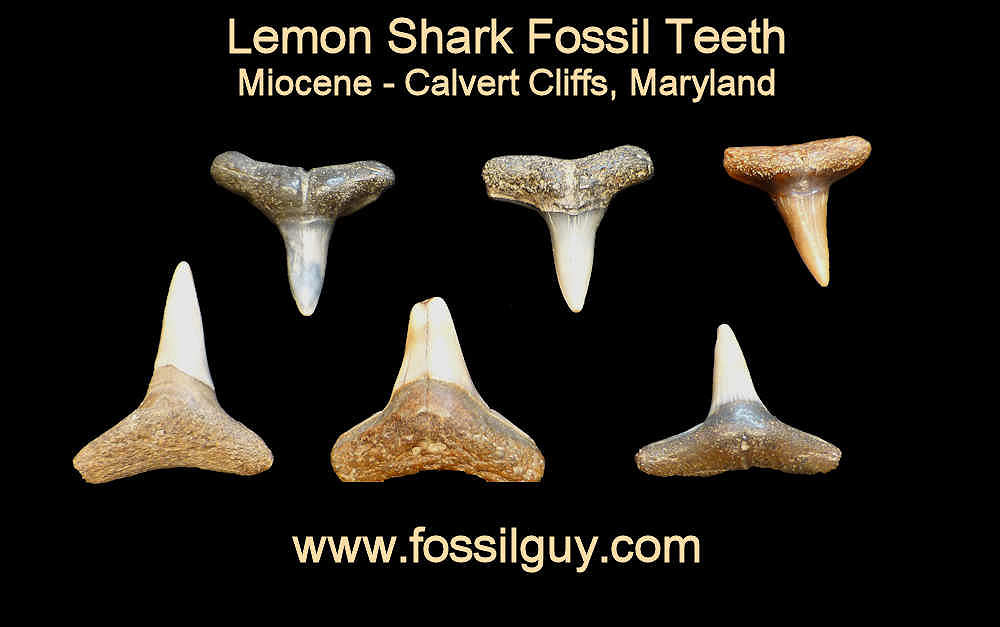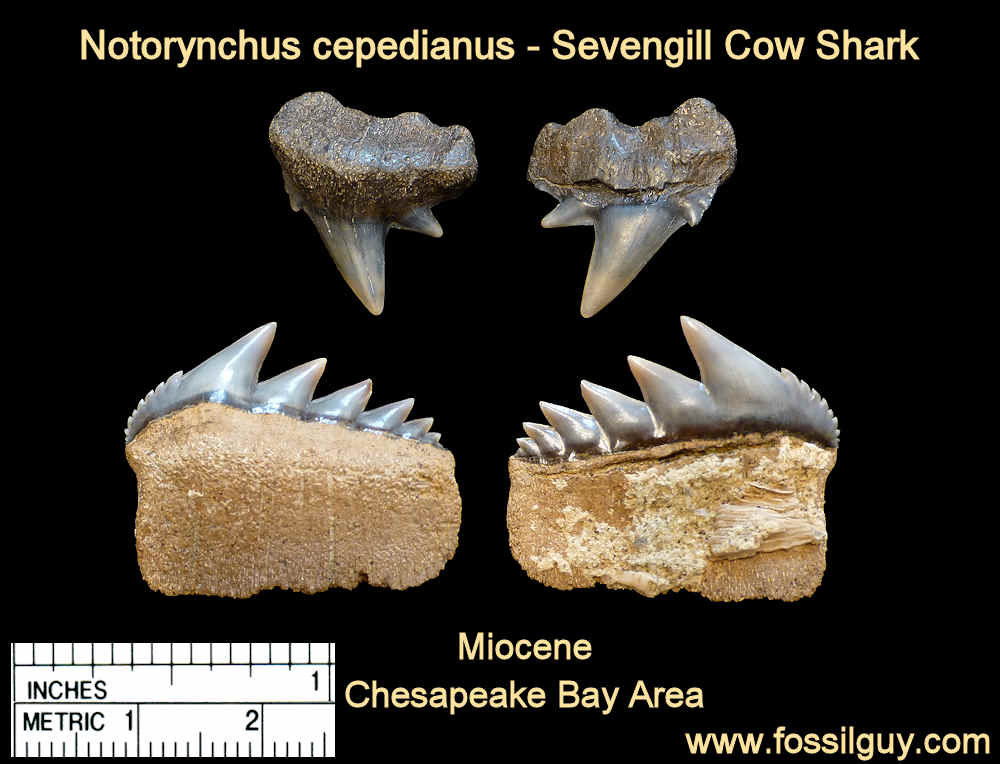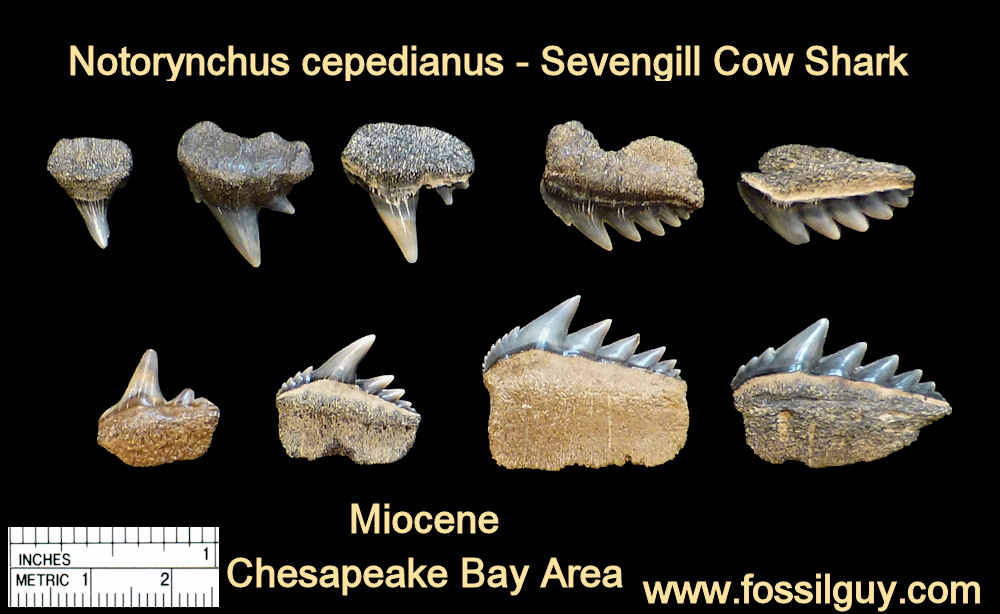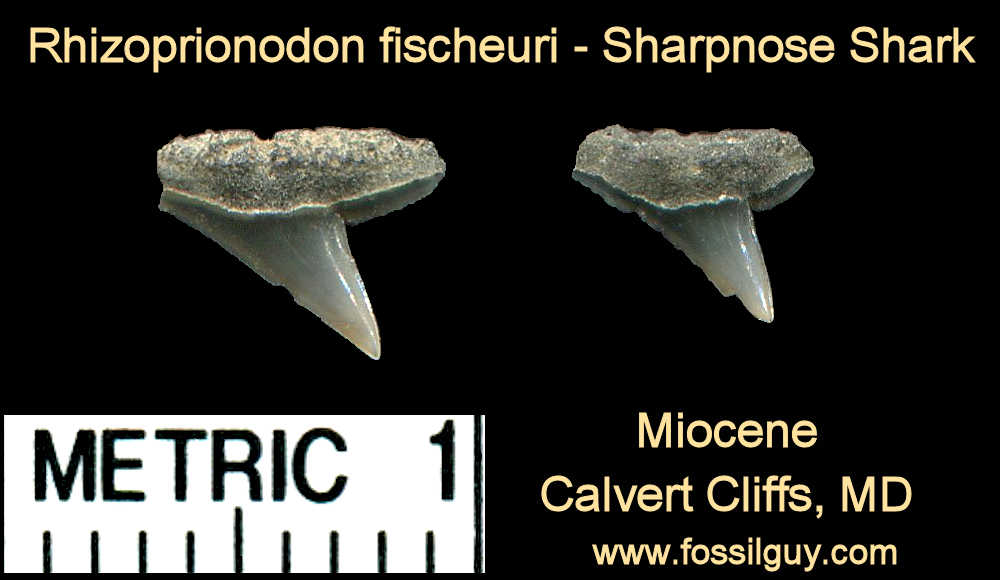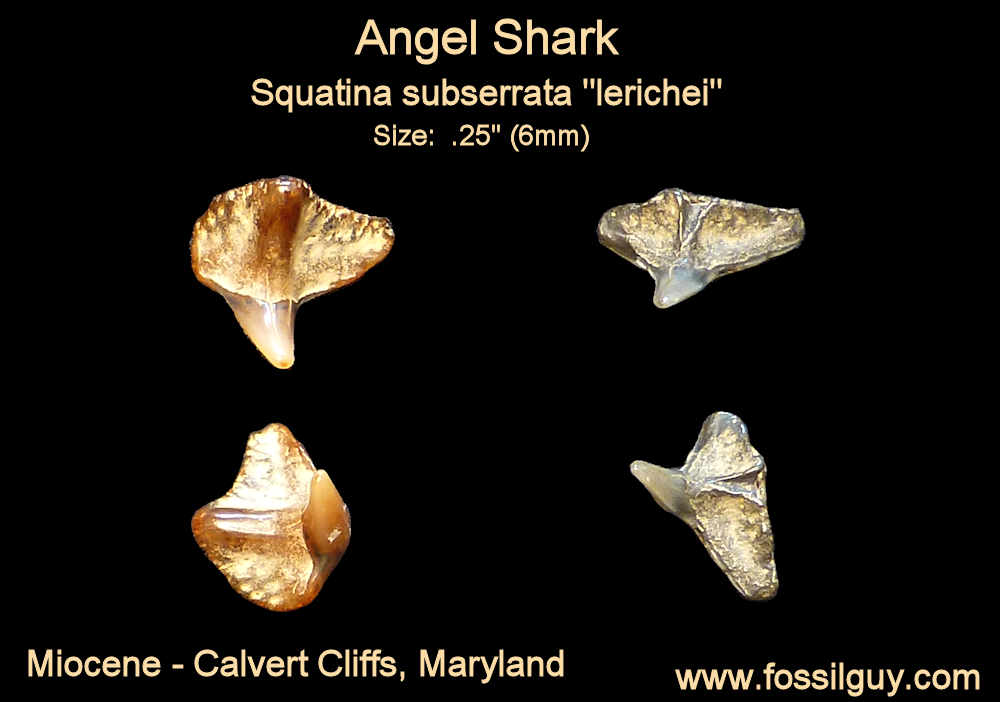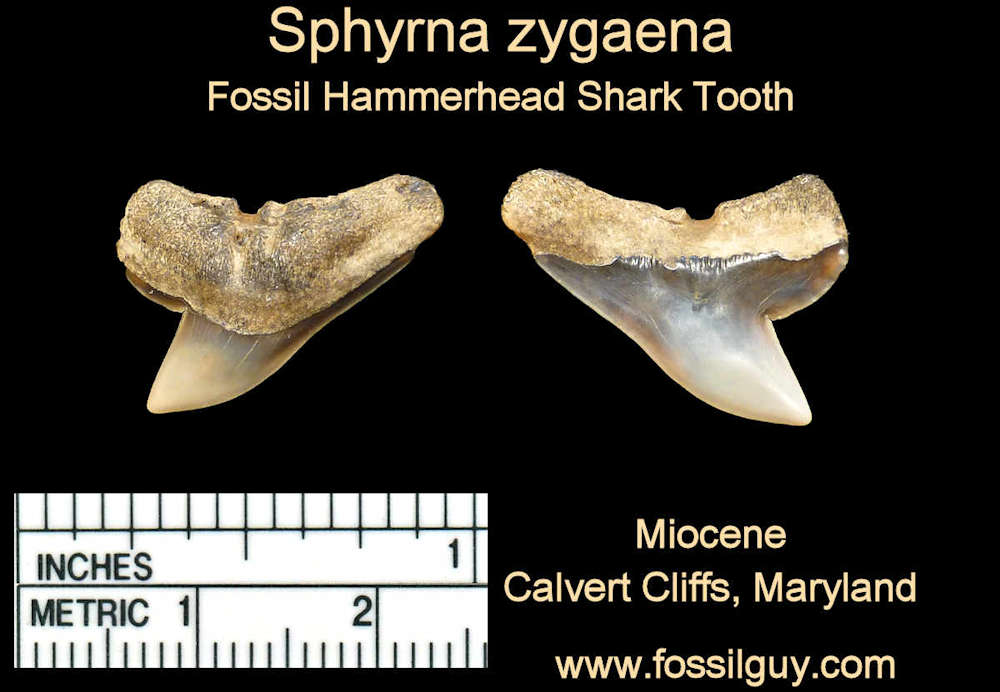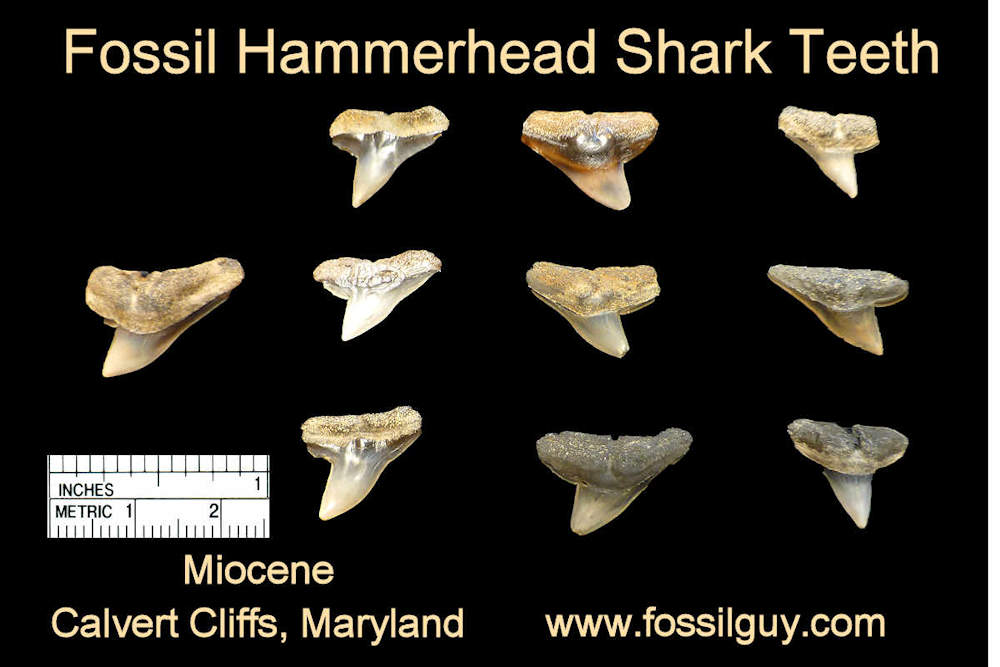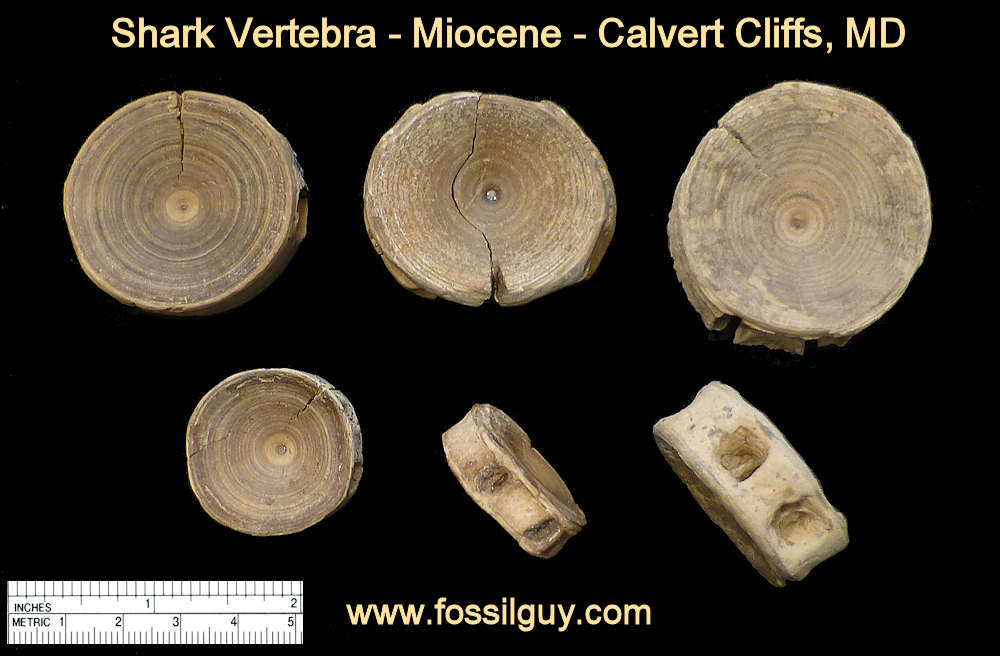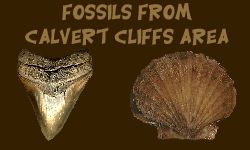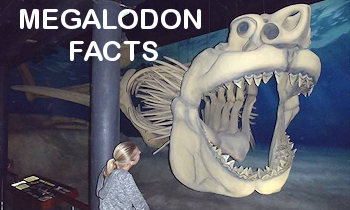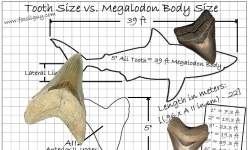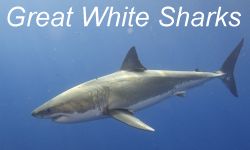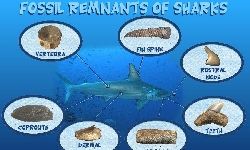
Fossil Shark Tooth Identification Guide for the Calvert Cliffs of Maryland and the Horsehead Cliffs of Virginia.
Sharks are related to Skates and Rays, as they are all in the Chondrichthyes Class. Fish in this class have a skeleton made of cartilage instead of true bone. What this means for the fossil collector is bones from these animals seldom fossilize. Occasionally a vertebra maybe found, however mostly the hard shark teeth and ray crushing plates are found.
Sharks and Rays
Fossil shark teeth are the most popular fossils to look for at the Calvert Cliffs. They are all from Miocene time period. One of the more sought after shark is the Megalodon shark, a giant 60 foot shark!
Click on the type of shark tooth fossil or scroll down to browse:
Or go back to the
MAIN Calvert Cliffs Page
Ray Fossils
Ray fossils that can be found include Teeth (most common), Scutes, and Tail Barbs.
Today, the Chesapeake bay is home to the Cownose Ray
(Rhinoptera bonasus), an Eagle Ray which can grow to 3 feet in width. They migrate here in the spring to mate and give birth. If you are on a boat or kayak, you can sometimes see them basking in the sun near the surface of the water, like the one in the image below.
Rays have modified teeth that form flat crushing plates. These crushing plates are adapted for eating mollusks and crustaceans on the sea floor. They suck their prey up like a vacuum and simply crush them between their upper and lower crushing plates.

A modern ray jaw, including the upper and lower crushing mouthplates. This one is on display at the Museum National d'Histoire Naturelle in Paris.
In the Calvert and Choptank Sea millions of years ago, there were a wide variety of Rays that
included many tropical forms not found here today.
As a result, identifying ray fossil fragments commonly found on the beaches is difficult.
Some of the common rays include Aetobatis (Bonnet Rays),
Aetomylaeus (Smooth-Tail Eagle Rays), Myliobatis (Eagle Rays),
and Rhinoptera (cownose rays).
Common fossils from rays are pieces of their crushing plates, barb pieces, and scutes.
Some of the common ray fossils are shown below.
Myliobatidae family - Eagle Rays
Aetomylaeus sp.
Smooth-tail Eagle Ray partial crushing plate
Partial crushing plates, like this one, are very difficult to find due to their fragile nature. This one was still in a big clay pebble on the beach, probably from Zone 9.
The left view is the side that did the crushing, the right is the back side of the plate
Formation: Calvert, Plum Point member - Age: Miocene, ~18-15 m.y - Location: Calvert Cliffs, Maryland - Size:~3.5 x 2" (88 x 50mm)
Myliobatidae family - Eagle Rays
Aetomylaeus sp.
Bonnet Ray crushing plate fragments
Bonnet Ray upper plate fragments are easy to identify. Upper crushing plate fragments are "V" shaped. Lower plate fragments are more difficult to identify as the fragments look closely like Myliobatis sp.
This image shows examples of Bonnet Ray upper crushing plate fragments. Notice the "U" or "V" shape.
This is another ray partial crushing mouthplate.
Formation: Calvert - Age: Miocene, ~18-15 m.y -
Location: Calvert Cliffs, Maryland - Size:~1.5" wide (38mm)
Misc Ray Plates and Fragments
Often just pieces of Ray plates are found. These look like little rectangles. They can't really be identified to any specific rays.
This shows ray crushing plate fragments and small crushing plates. This is what is usually found.
Ray Dermal Scutes
Rays have scutes under their skin for protection. These are sometimes found as fossils.
Ray Dermal scutes come in all shapes and sizes. The general look is a shiny scale that looks as if it's embedded
into a piece of flat matrix. All of this is the fossil scute. I have seen them range in size from 1/4" to 2".
This image shows an example of a ray dermal scute.
Ray Tail Spines
Rays have tail spines, or barbs, toward the base of their long whiplike tails. Sometimes fragments of these can be found.
This is an example of Ray tail barbs sections.
Shark Fossils
Shark fossils that can be found include Teeth (most common), Vertebra, and sometimes Cartilage.
The image below shows a few modern shark jaws, including a mako and bull shark.
These are on display at the Museum National d'Histoire Naturelle in Paris.
Alopias sp.
The Thresher Sharks
A. grandis, A. palatasi, and A. latidens
There are three species of Thresher sharks found in the Calvert Cliffs formations. A. grandis is rare a Giant Thresher, A. palatasi is a rare Serrated Giant Thresher, and A. latidens is the smaller and much more common thresher shark.
Alopias palatasi
Serrated Giant Thresher Shark
These teeth are scarce along the Calvert and Choptank formations.
This is a Giant Thresher shark with serrated teeth.
Identification: Large, Serrations, Very Curved Root and overal Thresher shark shape.
Alopias cf. latidens (Leriche, 1909)
Thresher Shark
These teeth are the more common type of thresher shark.
Thresher sharks can get up to 11 feet in length, however almost half of its length is in its long tail. Modern Thresher sharks (A. vulpinus) are pelagic (open ocean sharks), and nocturnal. They usually eat small fish and squid. These fossil Thresher sharks probably had a similar behavior to their modern counterparts.
Identification: Small, No Serrations, Very Curved Root
Similar Fossils: Similar in shape and size to Hammerhead and worn Gray shark teeth.s sharks, many are nearly impossible to tell apart based on isolated teeth.
The above is an example of an Alopias cf. latidens lateral tooth
Formation: Calvert, Plum Point member - Age: Miocene, ~18-15 m.y - Location: Calvert Cliffs, Maryland - Size: ~9/16" (13mm)
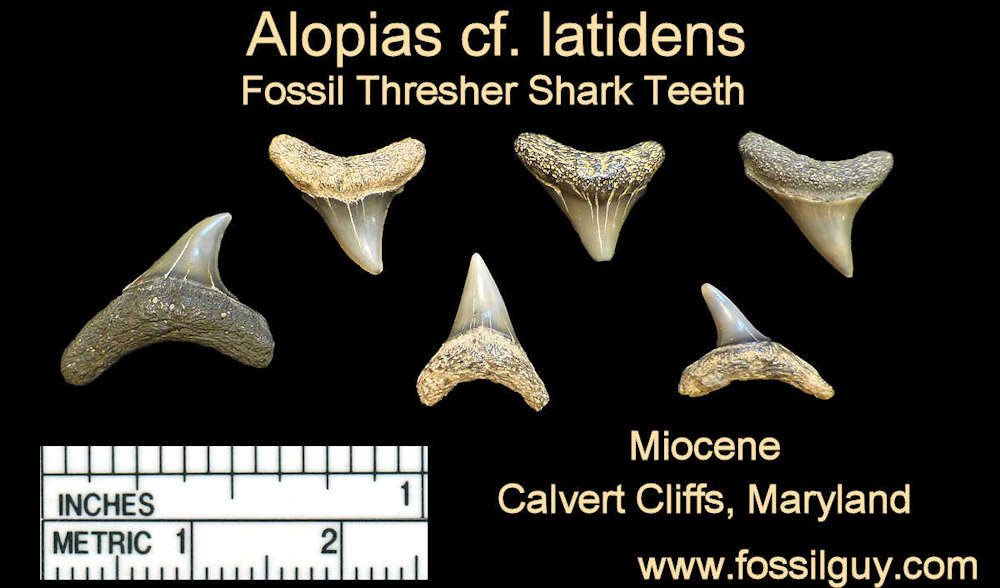
These are more examples of Thresher shark teeth (Alopias cf. latidens).
Thresher shark teeth are MUCH less common than the Gray shark teeth.
The above is an example of an Alopias cf. latidens lateral tooth
Carcharias sp.
Sand Tiger Shark
C. cuspidata, Odontaspis reticulata aka C. acutissima aka C. retuculata
Growing up to 10 feet in length, Sand Tigers are found in temperate waters worldwide along the coast,
including the Eastern United States. They look ferocious in the water as they usually swim with their
mouths partially open, showing rows of long and pointy teeth. These teeth are ideal for grasping onto bony fish, their prey.
Sand Tigers do not look like and are not related to the similarly named Tiger Shark.
Individual Sand Tiger teeth are highly variable. As a result, the research is a little muddy on fossil sand tigers.
There is debate as to how many species of sand tiger are found in the Miocene formations along the Chesapeake Bay.
Two possible species include: C acutissima, and O. retuculata. C. acutissima may be C. retucalata, which is often called Odontaspis retuculata.
Identification: Sand Tiger teeth have a distinctive shape, they have a long crown,
small recurved cusplets (sometimes worn off), and long pointy root lobes.
Similar Fossils: From isolated teeth, it's very difficult, if not impossible to distinguish one Sand Tiger species from the next.
Carcharias cuspidata
Sand Tiger Shark
C. cuspidata is the larger and more common fossil sand tiger shark tooth found in the Miocene sediments.
They range in size from roughly 1/2" to 1.5".
Like all Sand Tiger teeth, they
are highly variable. They can have one or two cusps, the cusps can be long and pointy, they could be low "bumps",
or anything in between. Each tooth position has a different tooth shape.
Similar Fossils: Other Sand Tiger Species, Laterals can sometimes be confused with juvenile Mako Teeth .
The above is an example of a Carcharias anterio-lateral tooth. It may be C. cuspidata.
Sand tiger teeth are highly variable. This one has two cusps instead of the more typical single cusp.
The cusps on the other side are broken off.
Formation: Calvert - Age: Miocene, ~18-15 m.y - Location: Calvert Cliffs, Maryland -Size: ~7/8" (22mm)
These are additional examples of fossil Sand Tiger Shark teeth. Most are probably C. cuspidata. This shows the variation amung different tooth positions.
Odontaspis reticulata aka Carcharias reticulata
Smalltooth Sand Tiger Shark
This shark might be synonymous with C. acutissima
Identification:
Teeth from this shark are very small and slender. They are usually around 1/2" in size (12mm),
and usually don't reach sizes over 3/4" (19mm).
The blade and root are both very slender. O. reticulata teeth also have long, pointy cusps on the enameloid shoulders.
Similar Fossils:
These can easily be confused with other species of juvenile sand tiger teeth.
Notice the small, slender shape of this tooth. The cusps are also long and pointy.
These are other examples of fossil Smalltooth Sand Tiger shark teeth.
The Carcharhinus Genera
The Gray Sharks
The Carcharhinus, or the Gray Sharks, are a genus of requiem shark with over 30 extant species.
They are very common and feed on a variety of prey, from bony fish, other sharks and rays, and squid.
This genus of shark still populates the Chesapeake Bay today. The bay acts as one of the most important nursery
grounds on the east coast for the sandbar shark, Carcharhinus plumbeus.
Gray Sharks underwent rapid diversification in the Miocene seas and their teeth are among the most common fossils found at many
places in the Chesapeake group. Unfortunately, there is a high degree morphological overlap between different species, so it
can be VERY difficult to distinguish between many of these species based on their fossil teeth alone.
In his 2018 publication, Kent says the Carcharhinus teeth are suprisingly diverse and the exact number is unclear. He recognises
7 identifiable species (p. 112). Those species are: C. cf. C. altimus, C. falciformis, C. leucas, C. macloti, C. perezii, C. priscus, and C. plumbeus.
For more detailed identification and additional species ID images, go to the Carcharhinus page, which contains identification images for many more species.

Sample fossil Gray shark teeth species from the Chesapeake Group of Maryland and Virginia.
Carcharocles megalodon (Agassiz, 1843)
Carcharocles subauriculatus (Agassiz, 1839)
The Megatooth Shark
Megalodons are among the most sought after teeth in the Calvert cliffs
and other nearby Miocene exposures. However, before you go looking for a huge megalodon from the cliffs,
you should be warned most of the meg teeth found in this area are in the 1 - 3" class.
Although larger ones are found, you have a better chance at finding the large ones in the younger Pliocene
exposures further south in the Atlantic coastal plain.
For information about megalodon sharks, go to the
Megalodon Shark Gallery
If you found a megalodon tooth and want to know the size of the shark it came from, go to the
Tooth Size vs Body Size
page.
Identification: Large Teeth, Robust, Bourlette, Fine Serrations
C. megalodon vs C. subauriculatus
C. subauriculatus is thought to have evolved directly into C. megalodon. The only difference is the tiny cusplets.
This species is only found in the early to middle Miocene.
The problem at the Cliffs is, during this time period, both sharks were present, and there appears to be many
variations of the two species. Some subauricilatus have well defined cusps, while others barely have any. The line
between the two species is often blurred. Further compounding the situation is that juvenile megalodons
can have cusps on their teeth, making them look like subauriculatus.
Basically, if you are not sure what exact species a tooth is, either C. megalodon or a C. subauriculatus, don't fret!
It's a megatooth shark!
This tooth has a special place in my heart, it's the first megalodon tooth I ever found!
Formation: Calvert, Plum Point member - Age: Miocene, ~18-15 m.y - Location: Calvert Cliffs, Maryland - Size: ~ 2.75" (68mm)
These are more examples of megatooth shark teeth - Carcharocles Megalodon and Carcharocles subauriculatus.
This is the typical size and condition the teeth are found in at the Calvert Cliffs.
Carcharodon hastalis
aka: Cosmopolitodus hastalis
Narrow White Shark
The genus Carcharodon first appears in the Oligocene.
It is represented by scarce fossil teeth found in Belgium.
This genus branches out into many species, such as the Miocene C. hastalis and C. subserratus, and the Pliocene C. plicatilis and C. hubbelli and C. carcharias. The Genus Cosmopolitodus is now considered synonymous with Carcharodon.
According to Kent (2018), at the Calvert Cliffs, C. hastalis is the most common white shark. There is tremendous variation with this species. Some teeth can appear exceptionally large and broad, resembling C. plicatilis, however C. plicatilis is a Pliocene species and not present at the Calvert Cliffs. Therefore, even the large, broad looking teeth are consdered C. hasatlis at the Calvert Cliffs.
To learn about all the different White Sharks and White Shark evolution, go to
the
White Shark Gallery to learn more.
Carcharodon hastalis
This is the more common white shark found at the Calvert Cliffs.
These sharks have been historically classified as mako sharks.
Although incorrect, the common name 'mako' is still often used.
Carcharodon hastalis
Narrow White Shark
Identification:
This shark is the narrow form white shark. Although it's a "narrow" form, it still has a wide and triangular crown. The blade is smooth.
This is the most common White shark found at the Calvert Cliffs. The other white shark at the cliffs is C. subserratus, which is much less common. It looks like C. hastalis, but has weak/partial serrations.
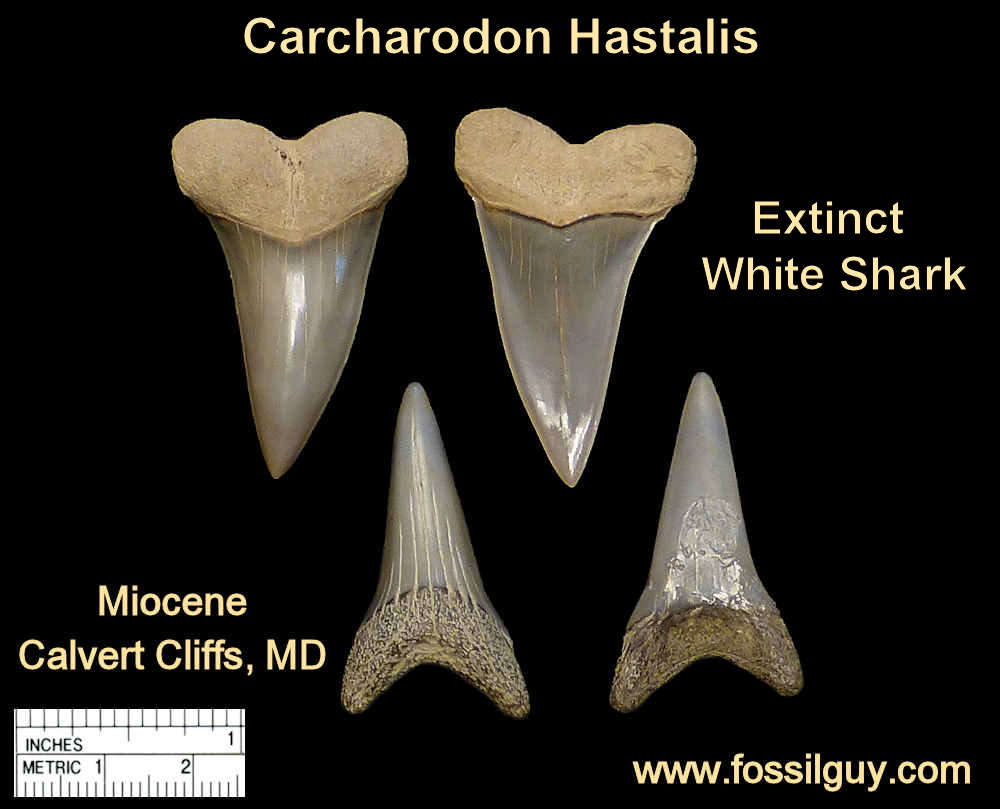
The above is an example of an upper and lower tooth of C. hastalis, the Narrow White shark.
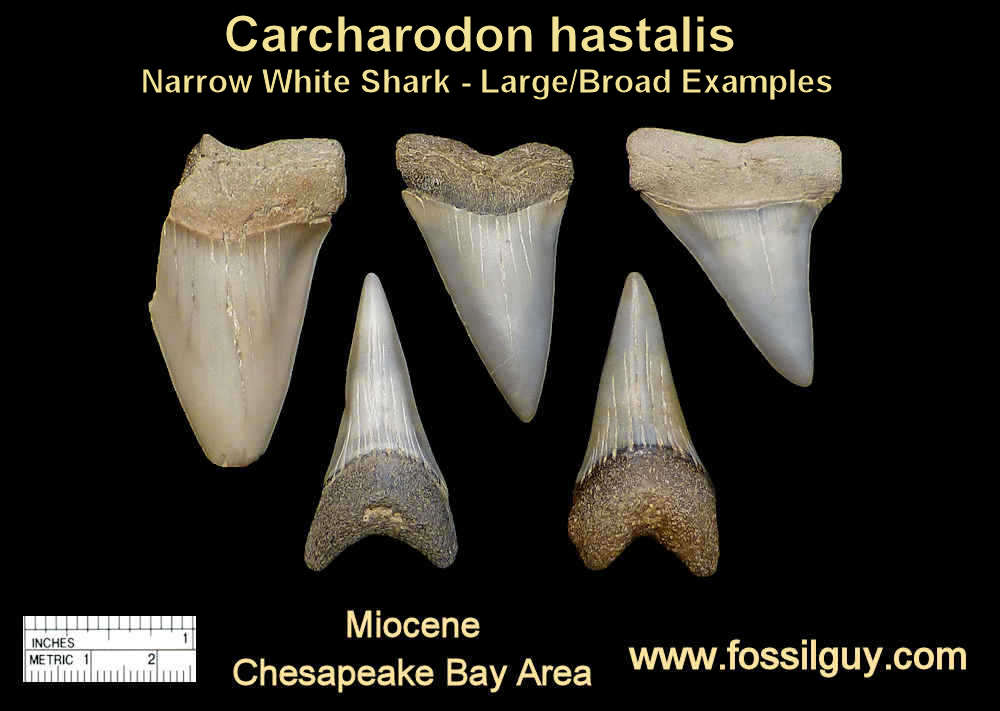
These are a few larger and more broad looking C. hasalis shark teeth from the Cliffs.
These are more examples of interestingly colored Narrow White shark teeth (C. hastalis).
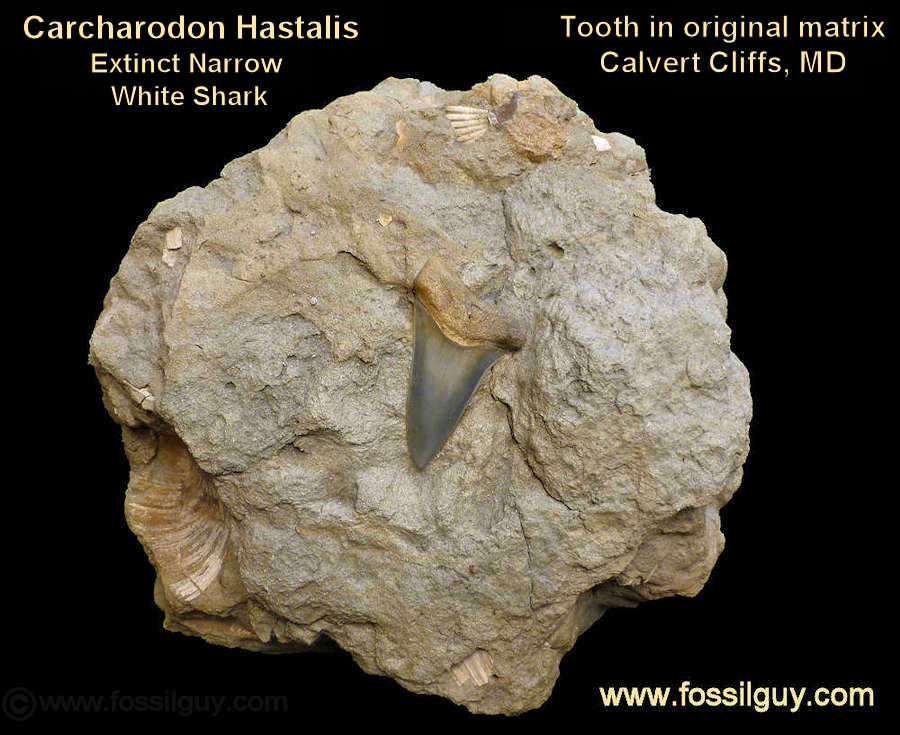
This is a nice Narrow White shark tooth still in the matrix.
The tooth is 2" (51mm) long.
Galeocerdo sp.
Tiger Shark -
Galeocerdo aduncus and Physogaleus contortus
Tiger sharks are found in tropical and temperate waters across the globe.
They are large sharks with an unmistakable appearance
as they have very short and blunt snouts.
They also have a unique color pattern. At birth, Tiger sharks have dark spots along their dorsal surface,
which fuse into vertical bars or stripes at maturity. These unique stripes begin to fade as the shark ages.
Tiger sharks first appear in the fossil record in the Eocene as Galeocerdo latidens.
Today there is one living species of tiger shark, Galeocerdo cuvier.
In the Miocene, the living Tiger shark does not yet exist. There are two types of Tiger like sharks: Galeocerdo aduncus and Physogaleus contortus. P. contortus is not a true tiger shark, but is shown in this section for comparison.
Go to the Tiger Shark Gallery to learn more about Tiger Sharks.
Galeocerdo aduncus
Extinct Tiger Shark
G. aduncus is very similar to the living Tiger shark (G. cuvier), except that it is smaller.
G. aduncus lived from the Oligocene into the Miocene.
Identification: G. aduncus is very easy to identify. Teeth have a very curved, but low and wide blade. The blade is serrated with coarse serrations on it's distil shoulder, and fine serrations on the mesial side. The roots are compressed, almost square shaped, with rounded root lobes. The teeth are very flat.
Upper and lower teeth are very difficult to distinguish from one another. Generally, the tooth gets flatter as the tooth position gets further toward the back of the mouth.
G. aduncus teeth are usually between 1/2" to 3/4" (13mm - 19mm)
Similar Fossils: Worn G. aduncus teeth sometimes look like the other tiger-like shark, P. contortus.
This is an example of a lateral G. aduncus fossil shark tooth.
Formation: Calvert - Age: Miocene, ~18-15 m.y - Location: Calvert Cliffs, Maryland - Size: ~7/8" (22mm)
These are additional examples of fossil Tiger Shark teeth, G. aduncus. This shows the variation amung different tooth positions.
Physogaleus contortus
Extinct Tiger-like Shark
This shark is also known as Galeocerdo contortus and Physogaleus aduncus in some paleontology circles.
The teeth are similar to G. aduncus but have more of a grasping shape to them instead of a cutting shape. This indicates it had more of a fish diet (like sand tigers) than G. aduncus.
Identification:
The defining characteristic of these teeth are their twisted crowns. Unlike G. aduncus, the crowns have VERY fine serrations.
The enameloid shoulders sometimes have course serrations. Their roots appear thicker and more robust than G. aduncus teeth.
A composite dentition of this shark can be seen on the Tiger Shark Gallery page.
Similar Fossils:
Worn teeth can be confused with worn Galeocerdo aduncus teeth.
This is an example of a lateral P. contortus fossil shark tooth. Notice the slightly "contorted" or twisted blade.
These are examples of different tooth positions of P. contortus. The first three teeth on the left are Parasymphyseal teeth or the teeth in the very front of the jaw.
Hemipristis serra (Agassiz, 1843)
Snaggletooth Shark
This species lived from the late Oligocene into the early Pleistocene.
They are commonly called Snaggeltooth Sharks due to the large serrations on their teeth.
Species of Hemipristis are extant today, however, they are only found in tropical waters, and
are much smaller than the fossil species. The fossil species are also found worldwide.
Identification: Upper teeth are unmistakable, as they have very jagged serrations and the root makes a "Z" type shape
Lower anterior teeth look similar to sand-tiger teeth, however, they have jagged cusps and a very thick bulge on the root.
Lower lateral teeth are similar to upper teeth, but are more compressed length wise.
Similar Fossils: Worn lower anterior teeth may resemble sand-tiger teeth.
Go to the Snaggletooth Shark Gallery to view a composite dentition, a full fossil sekeleton of a Snaggletooth shark, and to learn more about these sharks.
The above is an example of three Hemipristis serra teeth. One upper tooth and two lower teeth.
Formation: Calvert - Age: Miocene, ~18-15 m.y - Location: Calvert Cliffs, Maryland - Size: ~9/16" (13mm)
These are more examples of the extinct Snaggletooth Shark - Hemispristis serra
The tiny one on the bottom is a Symphyseal tooth.
This is an example of a Pathological shark tooth. It's a lower snaggletooth, but with a twisted crown and two tips.
Isurus oxyrinchus (Rafinesque, 1809) aka Isurus desori (Sismonda, 1849)
(Shortfin Mako Shark)
Shortfin Mako sharks can grow up to 12 feet in length. Some fossil Makos probably were slightly larger than this.
Makos are generally pelagic, or open ocean sharks.
Modern Makos eat a variety of prey, including other sharks, fish (including tuna and swordfish), and squid.
For information on Mako Sharks, please visit the Mako Shark Gallery.
Since the fossil species, I. desori, is nearly identical to the living species, I. oxyrinchus, some assign the fossil specimens
to the living species I. oxyrinchus.
Some prehistoric makos most likely branched off and evolved into the modern Great White shark.
The "Makos" that evolved into the Great Whites are assigned into the genus Cosmopolitodus to distinguish them from other Makos.
Identification: long crown with no serrations with pointed root lobes and a thick root center.
Lateral teeth are more compressed and sometimes have small cusps.
Similar Fossils: Smaller Shortfin Mako teeth can look like larger lateral Sand Tiger teeth and also small
Cosmopolitodus hastalis teeth.
There are also supposedly Longfin Mako sharks present, Isurus paucus, but I am unable to identify any.
The above is an example of an isurus oxyrinchus (desori) tooth
These are more examples of fossil Shortfin Mako Shark teeth.
Negaprion eurybathrodono (Blake, 1862)
Lemon Shark
This species of lemon shark only lived in the Miocene.
Lowers can be easily confused with Carcharhinus sp. lowers, however they
have smooth to very week serrated enameloid shoulders, where Carcharhinus sp.
have serrated enameloid shoulders.
Identification: Crown has a smooth edge, shoulder is weakly serrated, root and blade are at a nearly 90 degree angle
Similar Fossils: Gray shark lower teeth.
This is an example of a lateral G. aduncus fossil shark tooth.
Formation: Calvert - Age: Miocene, ~18-15 m.y - Location: Calvert Cliffs, Maryland - Size: 15/16" (25mm)
These are more examples of fossil Lemon Shark teeth.
Notorynchus cepedianus (Peron, 1807)
Sevengill Cow Shark
Also known as N. primigenius
Purdy et al (2001) believe these teeth are identical to the extant N. cepedianus,
and therefore N. primigenius is just synonymous to N. cepedianus.
At any rate, Cow sharks are very primitive sharks and look almost as weird as their teeth.
Cow sharks lack the many dorsal fins on their
backs that most sharks have. Instead, they only have a single dorsal fin toward their tail. They are
also very wide and bulky.
This species is extant today, but somewhat rare. They are active in shallow
waters and are very aggressive. They can get up to 10 feet in length.
Their diet consists of mainly other sharks, rays, bony fish, and seals.
Go to the
Cow Shark Gallery to learn more.
Identification: Cow shark teeth are unmistakable. Almost all Cow shark teeth from the bay are Notorynchus.
However, there are two types, Notorynchus, and the very rare Hexanchus.
Less than a handfull of Hexanchus teeth have been found at the Calvert Cliffs. Some differences between the two are as follows:
Notorynchus teeth have larger and more coarse serrations. Notorynchus also have less cusps running down the tooth; typically
a half dozen, while Hexanchus has around a dozen.
The
Cow Shark Gallery has a visual comparison between the two cow shark teeth.
Similar Fossils: Hexanchus
The above is an example of two different tooth positions of the Sevengill Cow Shark, Notorynchus cepedianus.
These are more examples of different tooth positions of the Sevengill Cow Shark.
Rhizoprionodon fischeuri (Joleaud, 1912d)
Sharpnose Shark
This is a small shark, reaching a maximum size of around 5 feet. It has a long snout (hence the name). This species
is uncommon in the Calvert formation. This may be partly due to their tiny size.
Identification:Sharpnose shark teeth are very small, only about 5mm long. They superficially resemble
a tiny hammerhead shark tooth, where they have a notched margin on their smooth enamel shoulder. The crown is slightly recurved.
These are two examples of sharpnose shark teeth.
Squatina subserrata "lerichei" (Munster, 1846)
Angel Shark
Angel sharks are very flat, looking more like a Ray than a Shark.
Most angel sharks are small, only a few feet across.
Some species can reach lengths up to 6 feet. Angel sharks bury themselves on the Ocean bottom and wait for prey to swim by. They feed on
fish, mollusks, crustaceans. Their mouths house numerous tiny teeth for grasping.
Because Squantina teeth are very small, they are difficult to find. All of my teeth were
found by screening.
This fossil species lived from the late Oligocene into the Miocene.
Identification: Tiny, No Serrations, Wide Root, Root and Enamel make an L shape
Similar Fossils: Whale Shark Teeth
The above are examples of Angel Shark teeth. Notice the root and blade make an "L" shape, or a 90 degree angle.
Formation: Calvert - Age: Miocene, ~18-15 m.y - Location: Calvert Cliffs, Maryland - Size: .25" (6mm)
Sphyrna zygaena
Hammerhead Shark
Hammer Head Sharks can get up to 11 feet in length. They feed on a variety of prey,
including other sharks, bony fish, and crustaceans.
The Common Hammerhead (Sphyrna zygaena), still populates the Chesapeake Bay today, and
is one of the largest sharks in the Bay.
For more information on Hammerhead Sharks, go to the Hammerhead Shark Gallery.
Identification: Small, No Serrations, Deep nutrient groove / notch on root, Notched margin on enamel
Similar Fossils: Similar in shape and size to Thresher and worn Gray shark teeth.
The above is an example of an Sphyrna zygaena lateral tooth
Formation: Calvert - Age: Miocene, ~18-15 m.y - Location: Calvert Cliffs, Maryland - Size: ~2/3" (19mm)
These are more examples of Hammerhead shark teeth.
Hammerheads are MUCH less common than the Gray shark teeth.
Shark Vertebra
Although sharks are made of Cartilage, the vertebra sometimes fossilize. Shark vertebrae pieces are fairly common.
Stress cracks running to the center of shark vertebrae are very common,
and are caused from the heat and pressure on the vertebrae during and after the fossilization process.
The above are examples of fossil shark vertebra.
Get Your Very Own Megalodon Tooth:
These are Authentic Megalodon teeth sold by Fossil Era , a reputable fossil dealer (that I personally know) who turned his fossil passion into a business. His Megalodon teeth come in all sizes and prices, from small and inexpensive to large muesum quality teeth. Each tooth has a detailed descriptions and images that include its collecting location and formation. If you are looking for a megalodon tooth, browse through these selections!
References:
Kent. B. W. 2018. Chapter 2: The cartilaginous fishes (chimaeras, sharks, and rays) of Calvert Cliffs, Maryland, USA. In: S. Godfrey (ed.), The Geology and Vertebrate Paleontology of Calvert Cliffs, Maryland. Smithsonian Contributions to Paleobiology, 100: 45-157. (PDF Here)
Recommended Books for Fossils and Nature of the Calvert Cliffs

The Geology and Vertebrate Paleontology of Calvert Cliffs, Maryland
Stephen J. Godfrey (Volume editor) - 2018
This is the latest comprehensive review of the fossils of Calvert Cliffs. This volume includes fossil sharks, skates, and rays. It also has ray-finned fish, crocodiles, and sea cows.
The shark section is incredible! The second volume is also about about Miocene Turtles and Cetacea. This is a technical publication, for paleontologists and avid fossil collectors of the Calvert Cliffs.
The volumes are published online and can be downloaded FREE at the openSI website.
Once at the site, search for ISSN 1943-6688 for the 1st volume and ISSN 1943-6688 for the 2nd volume.
Outdoor and Nature Books about the Chesapeake Bay
Thesea are good read to explore the surrounding Chesapeake Bay area when your are done fossil hunting!
Related Content
About the Author
Contact Us
To ask Questions about Paleontology, Fossil Identification, Image Use, or anything else, email us.
Fossilguy.com is very active on Facebook, you can also message us there!
We don't buy or sell fossils, so please don't email us asking about the value of a fossil or fossil purchases.
Visit us on Social Media:
Enjoy this website?
Consider a Paypal / Credit Card donation of any size to help with site maintenance and web hosting fees:
Privacy Policy and Legal Disclaimer
Back to the TOP of page
© 2000 - 2024 : All rights reserved
Fossilguy.com is a participant in the Amazon Services LLC Associates Program, an affiliate advertising program designed to provide a means for sites to earn advertising
fees by advertising and linking to amazon.com


 Aetomylaeus sp
Aetomylaeus sp
 Aetobatis sp.
Aetobatis sp.
 Misc Ray Fossils
Misc Ray Fossils
 Alopias sp.
Alopias sp. Carcharhinus sp.
Carcharhinus sp. Carcharias sp.
Carcharias sp. Carcharocles megalodon
Carcharocles megalodon Carcharodon hastalis
Carcharodon hastalis Galeocerdo aduncus
Galeocerdo aduncus Hemipristis serra
Hemipristis serra
 Isurus oxyrinchus
Isurus oxyrinchus
 Negaprion sp.
Negaprion sp. Notorhynchus cepedianus
Notorhynchus cepedianus Physogaleus contortus
Physogaleus contortus Rhizoprionodon fischeuri
Rhizoprionodon fischeuri Sphyrna zygaena
Sphyrna zygaena
 Squatina subserrata
Squatina subserrata
 Shark Vertebrae
Shark Vertebrae


